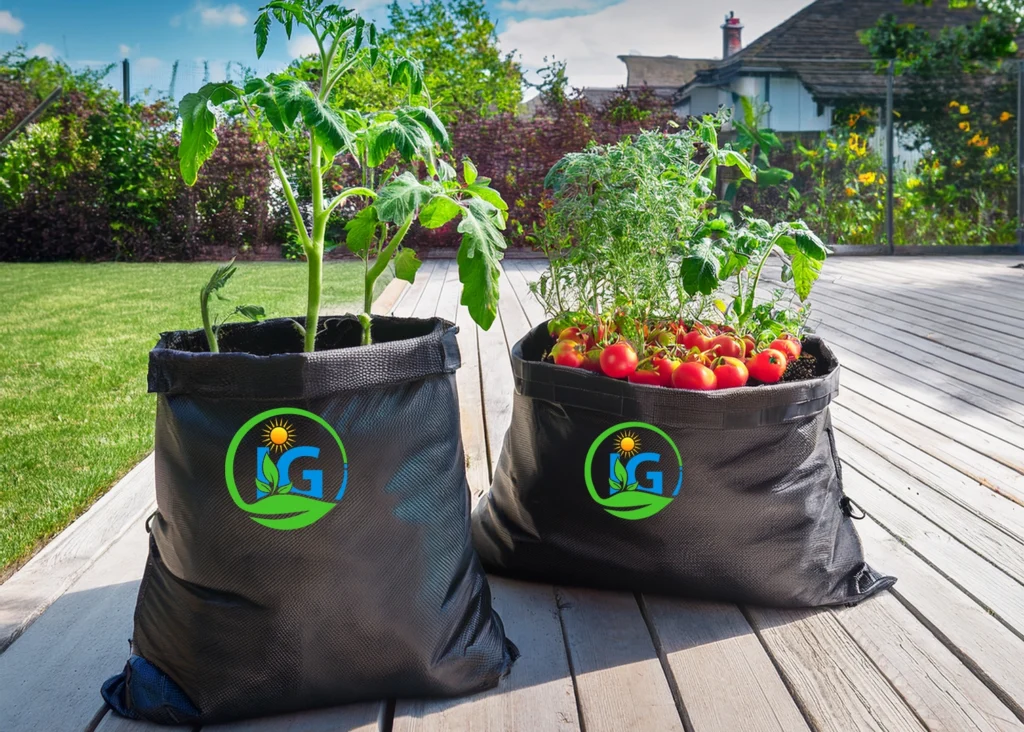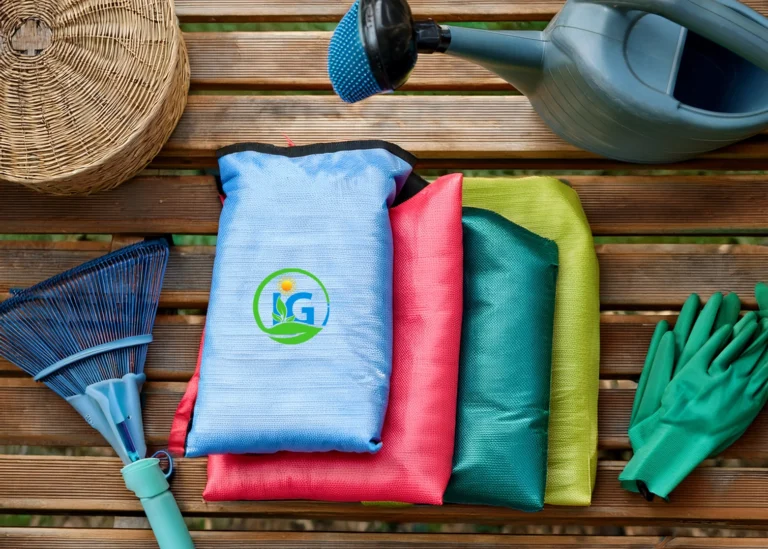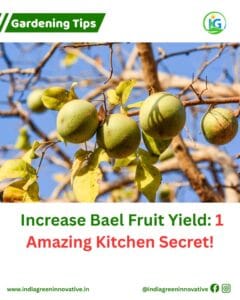
Table of Contents
ToggleHow Long Do Grow Bags Last? Your Ultimate Guide to Longevity + 10+ Amazing Tips!
Hey there, fellow plant lovers and gardening enthusiasts! If you’ve embraced the wonderful world of container gardening, chances are you’ve discovered the magic of grow bags. These versatile, breathable containers are fantastic for everything from tomatoes and peppers to potatoes and flowers, especially if you’re short on space or dealing with less-than-ideal soil. But as you gear up for another growing season or consider investing in more, a crucial question likely pops into your mind: how long do grow bags last? It’s a practical question with significant implications for your budget and gardening plans. Unlike traditional terracotta or plastic pots that can last for decades (though not without their own issues!), grow bags, particularly the popular fabric ones, have a finite lifespan.
Understanding the factors that influence their durability and learning how to properly care for them can make a huge difference, potentially stretching your investment over many happy growing seasons. In this ultimate guide, we’ll dive deep into the typical lifespan you can expect from different types of grow bags, explore the key elements that affect their longevity, identify the tell-tale signs that it’s time for a replacement, and, most importantly, share over ten amazing, actionable tips to help you maximize the life of your beloved grow bags. Let’s get those green thumbs ready and uncover the secrets to making your grow bags go the distance!
First Things First: What Exactly Are Grow Bags? (A Quick Refresher)
Before we delve into their lifespan, let’s quickly recap what grow bags are. Essentially, they are containers made from various materials – most commonly porous, breathable fabrics like non-woven polypropylene or felt, but also sometimes heavy-duty plastic (polyethylene).
Unlike rigid pots, grow bags offer several unique advantages that have made them so popular, especially with gardeners like us who value healthy plants:
Superior Aeration: The porous material allows oxygen to reach the root zone easily, promoting healthier, more vigorous root systems.
Excellent Drainage: Excess water readily drains through the fabric, preventing waterlogging and root rot – a common killer of container plants.
Air Pruning: When roots reach the edge of the fabric bag, they are exposed to air, which naturally prunes them. This encourages the plant to develop a more fibrous, dense root ball instead of circling roots often seen in traditional pots.
Temperature Regulation: Fabric bags can help moderate soil temperature, preventing overheating in summer compared to black plastic pots.
Lightweight & Portable: They are generally much lighter than ceramic or terracotta pots, making them easier to move around the garden or patio.
Storage: Empty fabric bags can be easily folded and stored compactly during the off-season.
These benefits are fantastic, but the very nature of the materials used, especially fabric, means they are susceptible to wear and tear over time. This brings us back to our central question…
gardeners!

The Million-Dollar Question: So, How Long Do Grow Bags Actually Last?
Alright, let’s get down to brass tacks. The honest answer to “how long do grow bags last?” is… it depends! Frustrating, I know, but true. However, we can certainly provide a general range and break down the influencing factors.
On average, you can expect most standard non-woven fabric grow bags to last between 3 to 5 growing seasons with proper care.
However, this is just an average. The actual lifespan can vary significantly:
Budget/Thin Fabric Bags: These might only last 1-2 seasons, especially if subjected to harsh conditions or rough handling. They are often made with thinner material and less robust stitching.
Standard Quality Fabric Bags: This is where the 3-5 season average typically falls. These bags offer a good balance of durability and affordability.
Premium/Heavy-Duty Fabric Bags: Made from thicker, more durable fabric (often measured in GSM – grams per square meter), with reinforced stitching and handles, these can potentially last 5 to 8+ seasons, sometimes even longer with meticulous care. They represent a higher initial investment but can pay off in longevity.
Plastic (Polyethylene) Grow Bags: These tend to have a shorter lifespan, often 1-3 seasons. They are particularly vulnerable to UV degradation, which makes the plastic brittle and prone to tearing. Many are designed for single-season or nursery use.
Biodegradable Grow Bags: These are designed to break down naturally over time, often within a single season or slightly longer, and can sometimes be planted directly into the ground. Their lifespan is intentionally short.
So, while 3-5 seasons is a good rule of thumb for the most common fabric types, remember this is highly variable. What causes this variation? Let’s dig deeper.
Key Factors Influencing Grow Bag Lifespan and Durability
Understanding what impacts how long grow bags last empowers you to make smarter choices and take better care of them. Several key factors come into play:
1. Material Quality and Construction: The Foundation of Grow Bag Durability
This is arguably the biggest factor. Not all grow bags are created equal.
Fabric Thickness (GSM): Non-woven fabrics are often measured in Grams per Square Meter (GSM). Higher GSM generally means thicker, stronger, and more durable fabric. A thin, flimsy bag (e.g., under 200 GSM) won’t withstand the elements or the weight of soil and plants nearly as well as a heavy-duty bag (e.g., 300+ GSM).
Type of Fabric: While non-woven polypropylene is common, some bags use recycled materials, felt, or other blends. Felt bags can be quite durable but may hold more moisture. The specific composition affects its resistance to tearing, UV rays, and degradation.
Stitching Quality: Look closely at the seams. Are they single-stitched or double-stitched? Are they reinforced, especially around the base and handles? Poor stitching is a common failure point, leading to bags splitting open under load. Serged seams are common but lockstitch seams are generally more durable.
Handle Reinforcement: Handles are crucial for moving bags, especially larger ones. Weakly attached handles (just stitched to the main fabric) are prone to tearing off. Look for handles made of sturdy webbing that are cross-stitched or otherwise reinforced onto the bag body.
UV Resistance Treatment: Some manufacturers treat the fabric with UV inhibitors to slow down degradation caused by sunlight. Untreated fabrics, especially darker colors, can break down faster under intense sun. Plastic bags are particularly susceptible if not UV-stabilized.
2. Environmental Exposure: Nature Takes Its Toll
Where and how you use your grow bags significantly impacts their lifespan.
Sunlight (UV Radiation): This is a major enemy of most fabrics and plastics. Prolonged exposure to direct, intense sunlight breaks down the molecular structure of the material, making it brittle, weak, and prone to tearing or disintegration. Bags used in full sun all day will degrade faster than those in partial shade.
Moisture and Rain: While designed for drainage, constant dampness can encourage mold, mildew, and algae growth on the fabric surface. While often just cosmetic, severe or persistent microbial growth can potentially weaken the fibers over time. Bags sitting directly on damp ground are more susceptible.
Temperature Extremes: Frequent freeze-thaw cycles can put stress on the fabric fibers or plastic, potentially causing micro-tears or weakening the material over time, especially if the bag is left full of frozen, expanded soil. Extreme heat can also accelerate UV degradation.
Wind: Strong winds can cause physical stress, whipping the bags around (if lightweight and empty) or causing abrasion against rough surfaces.
3. Usage Habits: How You Treat Your Bags Matters
Your gardening practices play a direct role in how long your grow bags last.
Filling Technique: Overfilling puts immense stress on the seams and fabric. Using soil mixes with sharp components (like large, jagged bark pieces) could potentially abrade or puncture the fabric from the inside, although this is less common with quality bags.
Moving and Handling: This is HUGE! Dragging a filled grow bag across any surface (especially concrete, gravel, or rough wood) is a guaranteed way to cause abrasion and shorten its life dramatically. Always lift using the handles (if sturdy) or support the base. Even rough handling during emptying can cause tears.
Type of Plants Grown: Plants with extremely vigorous or sharp root systems might theoretically stress the fabric more over time, but this is generally a minor factor compared to handling and environment. The weight of the plant and its root ball is more significant.
Soil/Growing Medium Weight: Heavier soil mixes put more constant strain on the bag’s structure and handles than lighter, fluffier mixes.
4. Care and Maintenance (or Lack Thereof): The Deciding Factor
How you care for your bags, especially between growing seasons, is critical for maximizing their lifespan.
Cleaning Practices: Leaving soil in bags over winter, or storing them dirty, allows soil-borne pathogens and pests to potentially overwinter. More importantly for lifespan, caked-on dirt and residual moisture can contribute to fabric degradation and microbial growth. Proper cleaning removes residues and prepares the bag for storage.
Storage Methods: This is arguably as important as material quality. Leaving bags outdoors, exposed to winter sun, snow, ice, and freeze-thaw cycles, will drastically reduce their lifespan. Improper storage (e.g., storing wet, folding sharply) can also cause damage.
Telltale Signs: When is it Time to Replace Your Grow Bag?
Knowing how long grow bags last also involves recognizing when they’ve reached the end of their useful life. Pushing a failing bag too far can lead to inconvenient spills, damaged plants, or wasted effort. Look out for these signs:
Visible Tears, Rips, or Holes: Small punctures might be patchable, but significant tears, especially near the base or seams, compromise the bag’s integrity. If soil is actively spilling out, it’s time.
Fraying or Detaching Seams: If the stitching is coming undone, particularly along the bottom or side seams, the bag is likely to split open soon, especially when filled or moved.
Handles Tearing Off: If the handles rip away from the bag body, it indicates significant stress or material fatigue. While you might still use the bag, moving it becomes difficult and risky.
Material Thinning or Brittleness: Feel the fabric or plastic. Does it feel significantly thinner in some areas? Is it becoming stiff, brittle, or cracking (especially common with UV-damaged plastic)? These are signs of degradation.
Fabric Disintegrating: If the fabric feels ‘powdery’ or easily crumbles or tears when you rub or gently pull it, its structural integrity is gone. You might end up with grow bag confetti!
Excessive, Stubborn Mold/Mildew: While some surface mildew can often be cleaned off, if the bag is heavily colonized and feels slimy or weakened even after cleaning, it might be better to replace it to avoid potential plant health issues and further degradation.
Loss of Structural Integrity: Does the bag sag excessively or refuse to hold its shape even when partially filled? This can indicate the fabric has stretched or weakened significantly.
Persistently Poor Drainage: While fabric bags excel at drainage, over time the pores can become clogged with fine soil particles or mineral buildup, especially if not cleaned regularly. If drainage seems significantly impaired despite cleaning attempts, the fabric might be compromised.
Don’t wait for a catastrophic failure mid-season! Inspect your bags thoroughly at the beginning and end of each growing cycle.
The Ultimate Guide: 10+ Amazing Tips to Maximize Your Grow Bag Lifespan
Okay, here’s the part you’ve been waiting for! You now understand the factors influencing how long grow bags last. Let’s translate that knowledge into actionable steps to extend their durability and get the most value from your investment.
Tip 1: Invest in Quality from the Start
This might seem obvious, but it’s the most impactful long-term strategy. While budget bags have their place, if longevity is your goal:
Choose Higher GSM: Look for fabric bags with a GSM rating of at least 250-300, or even higher for maximum durability, especially for larger sizes (10+ gallons).
Check Stitching and Handles: Opt for bags with double stitching, reinforced seams (especially at the base), and securely attached, robust handles (cross-stitched webbing is ideal).
Read Reviews: Look for reviews specifically mentioning durability and lifespan over multiple seasons. Reputable brands often have better quality control.
Consider UV Resistance: If buying plastic bags, ensure they are specifically labeled as UV-stabilized. For fabric, while harder to verify, premium brands are more likely to use UV-resistant materials or treatments.
Tip 2: Handle With Loving Care (Seriously, Don’t Drag!)
This is non-negotiable for extending grow bag lifespan.
Lift, Don’t Drag: Always lift the bag when moving it. Use the handles if they are sturdy and designed for the load. For very heavy bags, get help or use a dolly/cart, supporting the base. Dragging across any surface, even grass, causes abrasion. Concrete is a grow bag killer!
Gentle Tools: Be mindful when using trowels or cultivators near the bag’s edges to avoid accidental punctures or tears.
Support the Base: When lifting heavy bags, try to support the bottom as well as using the handles to distribute the weight and reduce strain on the seams and handle attachments.
Tip 3: Proper Filling and Placement Strategy
Don’t Overfill: Leave an inch or two of space at the top. Overfilling puts unnecessary stress on the upper seams and handles.
Use Quality Potting Mix: While less critical for the bag itself, avoid mixes with excessively sharp rocks or debris. A good quality, well-draining potting mix is best for your plants anyway!
Elevate if Possible: Placing bags directly on damp soil or decks can keep the base constantly wet. Consider placing them on pot feet, pallet scraps, gravel beds, or wooden deck protectors. This improves air circulation underneath and allows the base to dry out, reducing potential degradation and mold growth.
Strategic Sun Placement: If you have less UV-resistant bags, try to position them where they might get some afternoon shade, especially in regions with intense sun. This can slow down UV degradation. However, prioritize your plants’ light needs first!
Wind Protection: In very windy areas, group bags together for stability or place them in slightly sheltered locations if possible, reducing physical stress.
Tip 4: Rotate Your Bags (If Practical)
If you have multiple bags and some spots in your garden get harsher sun or weather exposure than others, consider rotating the bags each season. Don’t let the same few bags bear the brunt of the toughest conditions year after year.
Tip 5: The Crucial End-of-Season Clean-Up
This is VITAL for maximizing how long grow bags last. Don’t skip this step!
Empty Completely: Remove all soil and plant debris. Shake out as much loose soil as possible. Old soil can harbor pests, diseases, and retain moisture.
Brush Off Debris: Use a stiff brush to remove any caked-on dirt or roots clinging to the inside and outside.
Wash Thoroughly: This removes remaining soil particles, potential pathogens, and mineral buildup. You have options:
Hose Down: A strong spray inside and out can remove most loose debris.
Soapy Water: Use a mild detergent (like dish soap) and a scrub brush for more stubborn grime.
Vinegar Solution: A diluted vinegar solution (e.g., 1 part vinegar to 9 parts water) can help kill mold/mildew spores and potentially disinfect. Soak for 20-30 minutes, scrub, then rinse.
Oxygen Bleach (e.g., OxiClean): A popular choice for sterilizing and cleaning. Follow product instructions for dilution (usually 1-2 scoops per gallon of water). Soak bags for several hours or overnight, then scrub gently if needed. Avoid chlorine bleach, as it can degrade the fabric faster.
Rinse VERY Well: Regardless of the washing method, rinse the bags thoroughly with clean water to remove any cleaning residues.
Air Dry COMPLETELY: This is critical! Hang bags on a clothesline, drape them over a fence, or lay them out in a sunny, airy spot until they are bone dry inside and out. Storing even slightly damp bags invites mold, mildew, and fabric degradation.
Tip 6: Smart Off-Season Storage – Protect Your Investment!
Where and how you store your cleaned, dry bags over winter significantly impacts their lifespan. Storing them improperly is one of the fastest ways to shorten how long grow bags last.
Store Indoors: The ideal storage location is dry, cool, and dark – think shed, garage, basement, or even a closet. Protect them from the elements!
Protect from UV Light: Even indoor storage near a sunny window can cause some UV exposure over time. Keep them out of direct light.
Fold Loosely or Stack: Avoid folding them tightly with sharp creases, which can weaken the fabric over time. Fold them gently or stack them flat. Rolling them can also work well.
Keep Away from Pests: Ensure the storage area is free from rodents or insects that might chew on the fabric. Storing them in a sealed plastic tub can offer extra protection.
Ensure They Stay Dry: Protect them from leaky roofs or damp concrete floors.
Tip 7: Consider UV Protectant Sprays (Optional)
For extra protection, especially if your bags are constantly in harsh sun, you could consider applying a UV protectant spray designed for outdoor fabrics (like those used for awnings or outdoor furniture). Test on an inconspicuous area first. The effectiveness varies, but it might offer an additional layer of defense against sun degradation. Reapply periodically according to product instructions.
Tip 8: Repair Minor Damage Promptly
Don’t ignore small issues!
Small Holes/Tears: If you notice a small puncture or tear early on, you might be able to patch it from the inside using strong fabric glue and a piece of scrap fabric (some bags even come with patch kits). Heavy-duty outdoor thread can also be used for stitching small rips. Addressing minor damage prevents it from becoming a major failure.
Tip 9: Empty Annually (Even if Reusing Immediately in Place)
While tempting to just top up soil, it’s best practice to empty your grow bags completely at least once a year (usually at the end of the season). This allows you to:
Inspect the bag’s interior for damage.
Prevent excessive soil compaction over time, which can stress the bag.
Amend or replace the soil to ensure optimal plant health for the next season (which indirectly reduces stress on a potentially struggling plant/bag system).
Tip 10: Use Pot Saucers or Trays
Placing grow bags inside shallow plastic saucers or trays (ensure they still allow drainage out of the bag, perhaps by raising the bag slightly within the tray) can serve multiple purposes:
Catches excess water runoff, protecting decks and patios.
Keeps the very bottom of the bag from sitting in constant moisture, potentially extending the life of the base fabric.
Makes moving smaller bags slightly easier (lift the tray).
Bonus Tip: Understand Material Differences
Recognize the inherent lifespan differences. Don’t expect a cheap, thin plastic bag to last as long as a premium, heavy-duty fabric one, no matter how well you care for it. Adjust your expectations and care routines accordingly. Knowing the likely answer to “how long do grow bags last” for your specific type helps manage your gardening budget and replacement plans.
Can You Reuse Grow Bags? Absolutely! (With Proper Care)
Yes! One of the great things about most grow bags (excluding single-use or biodegradable types) is their reusability. As long as the bag is structurally sound and free from major damage, you can definitely reuse it for multiple seasons.
The key to safe and successful reuse lies in the end-of-season cleaning and sterilization process we discussed in Tip #5. This helps prevent the carryover of soil-borne diseases (like blight, fusarium wilt) or pests (like fungus gnat larvae, root nematodes) from one season’s plants to the next. Starting each season with a clean bag and fresh or refreshed potting mix gives your new plants the best possible start.
Grow Bag Lifespan: Fabric vs. Plastic – A Durability Duel
Let’s quickly recap the lifespan considerations for the two main types:
Fabric Grow Bags (Non-Woven Polypropylene, Felt, etc.):
Pros for Lifespan: Generally more durable than thin plastic, especially higher GSM versions. Resistant to tearing (unless degraded). Breathable nature helps prevent root rot which could stress a waterlogged plastic bag. Can often be repaired more easily than brittle plastic.
Cons for Lifespan: Susceptible to UV degradation over time (though often slower than untreated plastic). Can be damaged by abrasion (dragging). Requires thorough cleaning and careful drying/storage to prevent mold/mildew and fiber breakdown. Quality varies greatly.
Typical Lifespan: 3-8+ seasons, highly dependent on quality and care.
Plastic Grow Bags (Polyethylene):
Pros for Lifespan: Very inexpensive initially. Impermeable material resists abrasion slightly better than fabric initially. Easy to wipe clean superficially.
Cons for Lifespan: Highly susceptible to UV degradation, becoming brittle, cracking, and tearing easily, often after just 1-2 seasons in full sun unless specifically UV-stabilized (which adds cost). Less breathable, potentially leading to waterlogging if drainage holes are inadequate. Difficult or impossible to repair once brittle. Often designed for short-term use.
Typical Lifespan: 1-3 seasons, often less in harsh conditions.
The Verdict? For gardeners seeking multi-season use and asking “how long do grow bags last” with an eye towards longevity, good quality fabric grow bags generally offer a longer lifespan and better value over time provided they receive proper care. Cheap plastic bags are often a false economy if you plan to reuse them for several years.
Wrapping It Up: Making Your Grow Bags Go the Distance
So, back to our main question: how long do grow bags last? As we’ve seen, the answer ranges from a single season to potentially eight years or even more! The biggest determinants of grow bag lifespan are the initial quality of the bag you purchase and the care you provide throughout its life, especially during cleaning and off-season storage.
By investing wisely in well-made bags, handling them gently (no dragging!), protecting them from the harshest elements where practical, and diligently cleaning and storing them each year, you can significantly extend their usability far beyond the minimum expectation. You’ll save money in the long run, reduce waste, and enjoy the many benefits of grow bag gardening for season after season.
Now go forth, treat your grow bags well, and watch your garden thrive! Happy growing!
Do you have any other tips for extending grow bag life? Share them in the comments below – we love learning from fellow




